Here are five different ways to eat wild edibles that aren’t just salad. Use these techniques to preserve the goodness of wild plants for winter, and add their useful vitamins and minerals to your diet.
Wild edibles are survivors. Weeds grow deeply into the soil, breaking up hard pan and drawing up vitamins and minerals into their leaves, and flowers. You can tap into those minerals and vitamins while you are tending your garden this summer. Don’t waste wild edibles. Eat them or preserve them for winter. Here’s 5 ways to preserve wild edibles so that you can benefit from their vitamins, protein, and minerals. They are free and abundant all around you. So forage for the wild edibles and preserve them for winter, as you preserve your garden harvests.
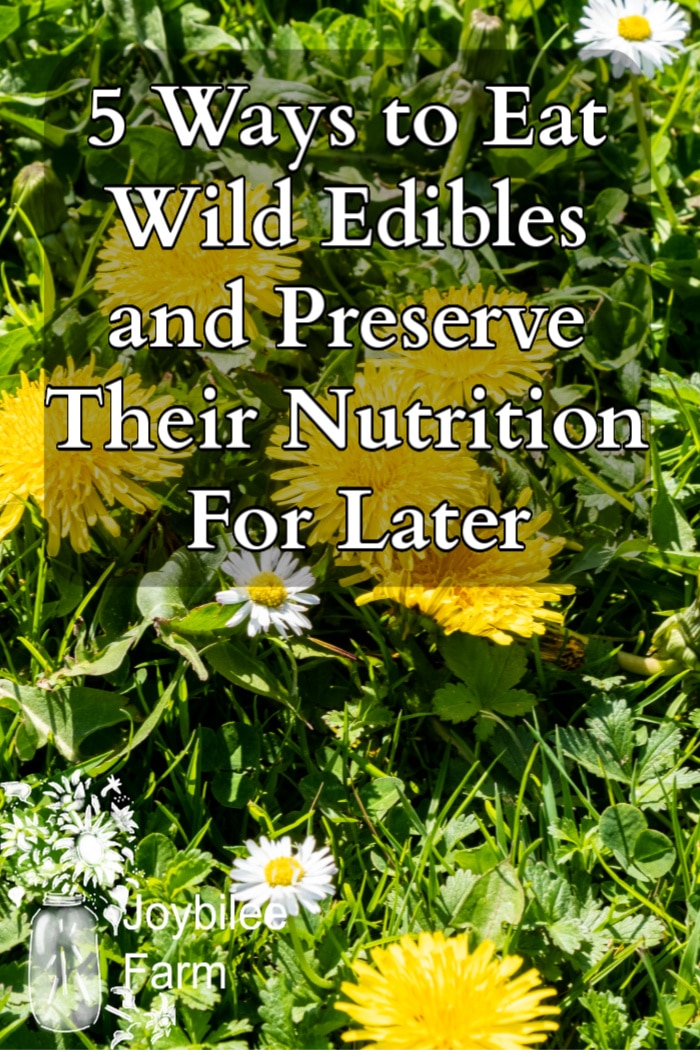
Last summer instead of pulling chickweed, plantain, and dandelions and feeding them to our chickens and goats, or just letting them desiccate on the pathways of my garden area, I harvested them for food. I dried them in my dehydrator, ground them with olive oil, tossed them into soups and stews, and found as many ways as I could to utilize this abundant resource on our zone 3 homestead. The weeds were prolific, showing me the fertility of my garden spaces. And we tried to harvest as much of the abundance as we could. Even with diligence, we barely took 10% of the abundance that was evident.
While there are many wild foods, in this post I am focusing on wild edible greens, but the same principles apply to wild edible mushrooms, and wild fruits. So consider all the wild foods and wild medicinal plants around you and consider how you can improve your use of these resources, while you improve your families nutrition.
Harvest conscientiously
And please harvest intentionally and ethically so that the plants will be around for many generations. Leave some to reseed for your grand children.
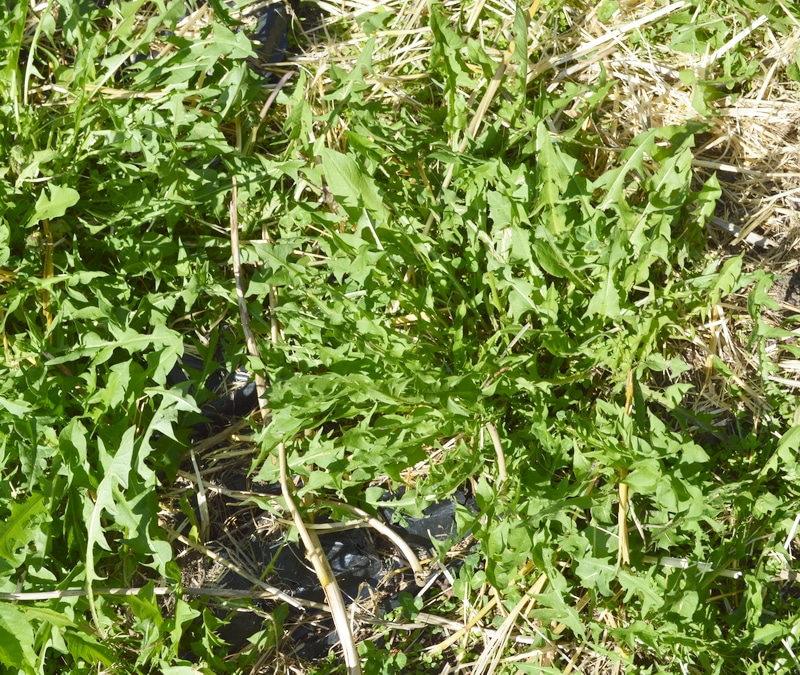
Preserving wild edibles
Of course you could just add them to your green salads all summer long. But here are 5 fresh ways to enjoy wild edibles all year.
- Dry them in your dehydrator and powder them to make super green powders. Use a blender for this. These work best when you use a mixture of different weeds. Add a little seaweed like dulse or kelp to increase the iodine, too.
- Blend them with olive oil for pesto. Pesto is delicious on pasta, potatoes, and rice. Pesto is delicious with garlic, a bit of lemon juice, olive oil, and a nut or seed like hazelnuts, or sesame and dry cheese like Parmesan or Asiago. Check out my weedy pesto recipe.
- Marinate them in olive oil or coconut oil and bake them into chips, just like Kale chips.
- Juice them. Add them to a smoothie or put them through a juicer and separate the juice and the pulp. Lamb’s Quarters and nettles are especially delicious as green juice. A little goes a long way though.
- Chop green edibles and freeze them in water in ice cube trays and add them to winter soups and sauces. Freezing in water, prevents the tissues in the greens from breaking up, and offers a better product for preserving the weedy goodness.
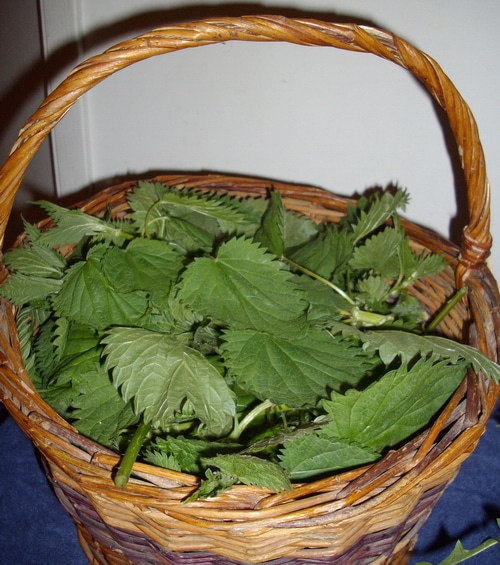
How nutritious are wild edibles?
Check out this chart and discover how nutritious those weeds really are. Start looking for creative ways to utilize them in your cuisine this summer.
Caution: Only use weeds that you know have been grown organically. Weeds sprayed with pesticides and herbicides, or weeds close to roadways will be contaminated with heavy metals and other poisons. If you want to harvest wild edibles on private land, always ask permission before you harvest. Many people will be happy to let you harvest their weeds. Be very sure that you know that wild edible that you are harvesting. Never taste-test it to see if it’s poisonous or edible. If you are a beginner, ask an experienced gardener or food forager to help you identify the weeds the first time you try to forage. Or get a good field guide for the weeds in your area and take it with you on your foraging hikes. I can’t stress enough, that you really need to correctly identify the weeds before you harvest them. So take the time to read a field guide to weeds or take a workshop from your local college or take a class in a local park.
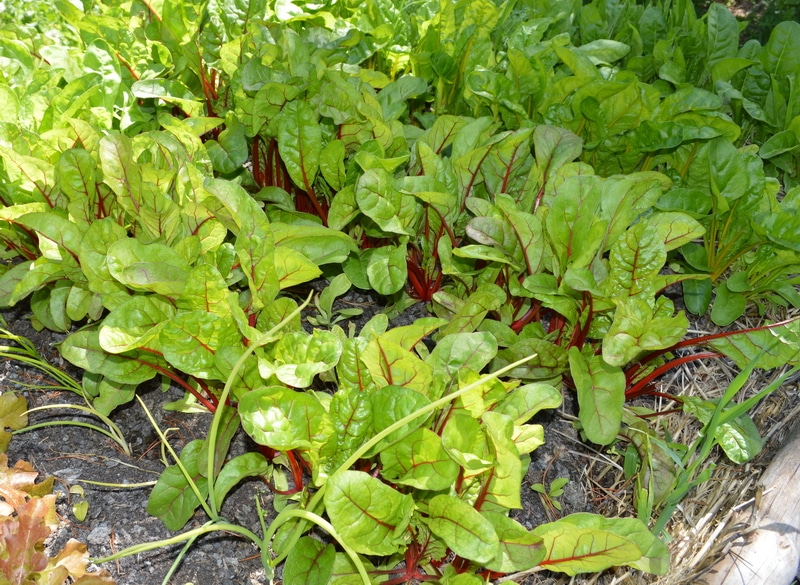
More Foraging Tutorials:
Harvesting Dandelion Roots and Preserving Them For Winter
Harvesting Marshmallow Roots and Preserving Them For Winter
Infusing Oil With Wild Medicinal Herbs
Infusing Vinegar With Wild Medicinal Herbs
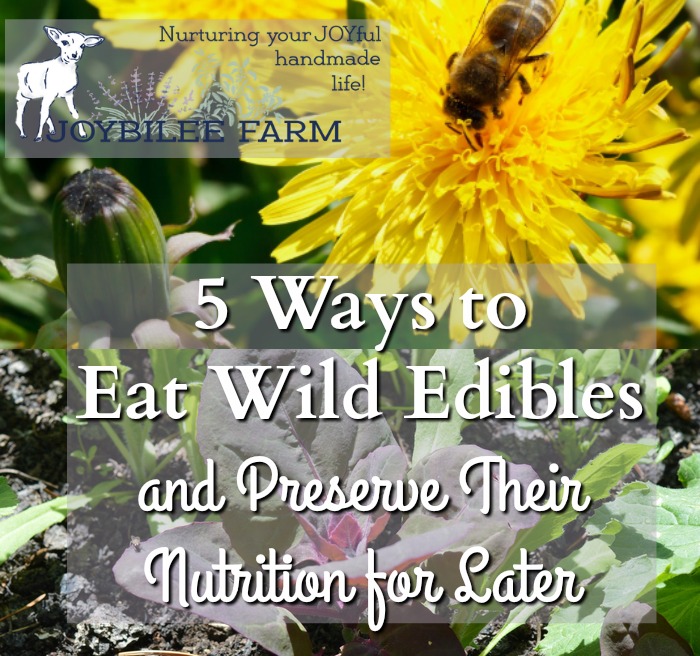
More resources you’ll need:
Grab a wild edible field guide for your region. You’ll want to make a sure plant identification using at least 3 sources of information, before you harvest a wild plant that is new to you.
Here’s the one I use for the BC Interior (I’m in Canada) Your local used book store is a good resource for local field guides.
The top foraging cookbook is this new release by The New Wildcrafted Cuisine It includes recipes for using wild edibles in unique ways like fermentation, seasonings, and beverages. It helps take the intimidation out of wild edibles.
Your turn:
I hope you’ll look at your edible wild plants with fresh eyes, now that you see how nutritious they are and how easy it is to preserve their mineral rich goodness. What are your favorite ways to preserve wild edibles.


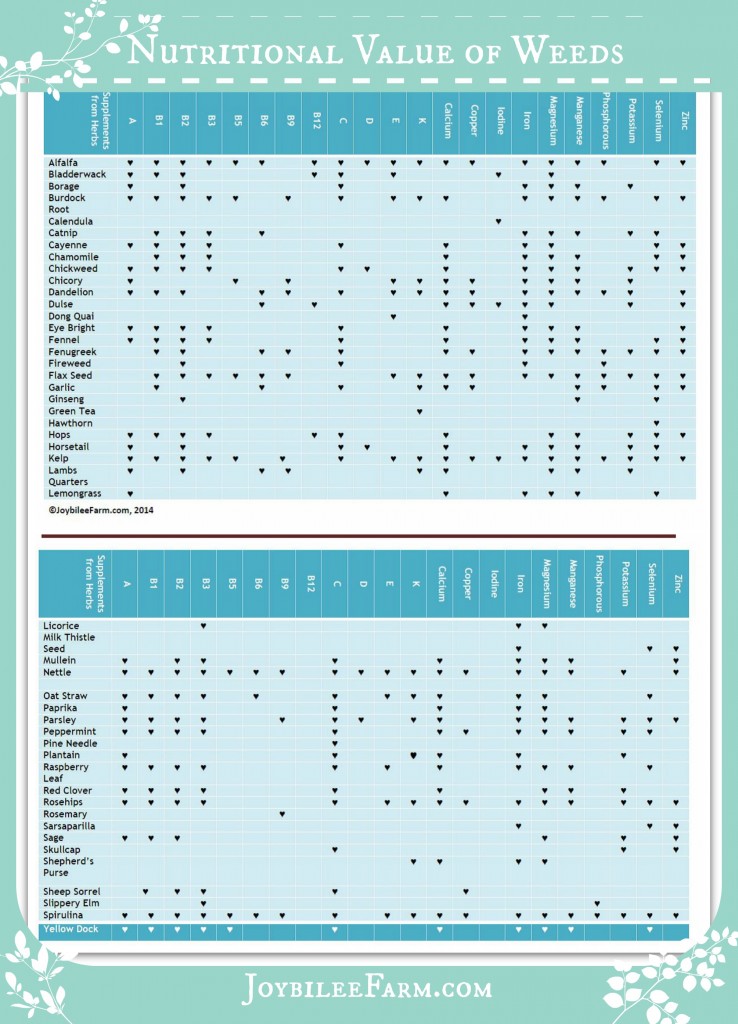

You need a wild plant field guide.
I just put that book on my Amazon wish list. I would love to utilize weeds more but I’m not sure about which weeds are which. Thanks for the recommendation.